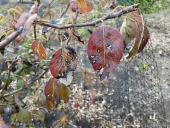


Willie Smits: Village Based Permaculture Approaches in Indonesia (video)
will be released to subscribers in:
soon!



 2
2








Living in Anjou , France,
For the many not for the few
http://www.permies.com/t/80/31583/projects/Permie-Pennies-France#330873








"The rule of no realm is mine. But all worthy things that are in peril as the world now stands, these are my care. And for my part, I shall not wholly fail in my task if anything that passes through this night can still grow fairer or bear fruit and flower again in days to come. For I too am a steward. Did you not know?" Gandolf




 1
1








to stand sileent and be considered a fool or to speak and remove all doubt





"Instead of Pay It Forward I prefer Plant It Forward" ~Howard Story / "God has cared for these trees, saved them from drought, disease, avalanches, and a thousand tempests and floods. But he cannot save them from fools." ~John Muir
My Project Page









Living in Anjou , France,
For the many not for the few
http://www.permies.com/t/80/31583/projects/Permie-Pennies-France#330873








Therefore, without sufficient amounts of magnesium, plants begin to degrade the chlorophyll in the old leaves. This causes the main symptom of magnesium deficiency, chlorosis, or yellowing between leaf veins, which stay green, giving the leaves a marbled appearance. Due to magnesium’s mobile nature, the plant will first break down chlorophyll in older leaves and transport the Mg to younger leaves which have greater photosynthetic needs. Therefore, the first sign of magnesium deficiency is the chlorosis of old leaves which progresses to the young leaves as the deficiency continues.





 1
1












Country oriented nerd with primary interests in alternate energy in particular solar. Dabble in gardening, trees, cob, soil building and a host of others.








 1
1









|
I think she's lovely. It's this tiny ad that called her crazy:
The new purple deck of permaculture playing cards
https://www.kickstarter.com/projects/paulwheaton/garden-cards
|





